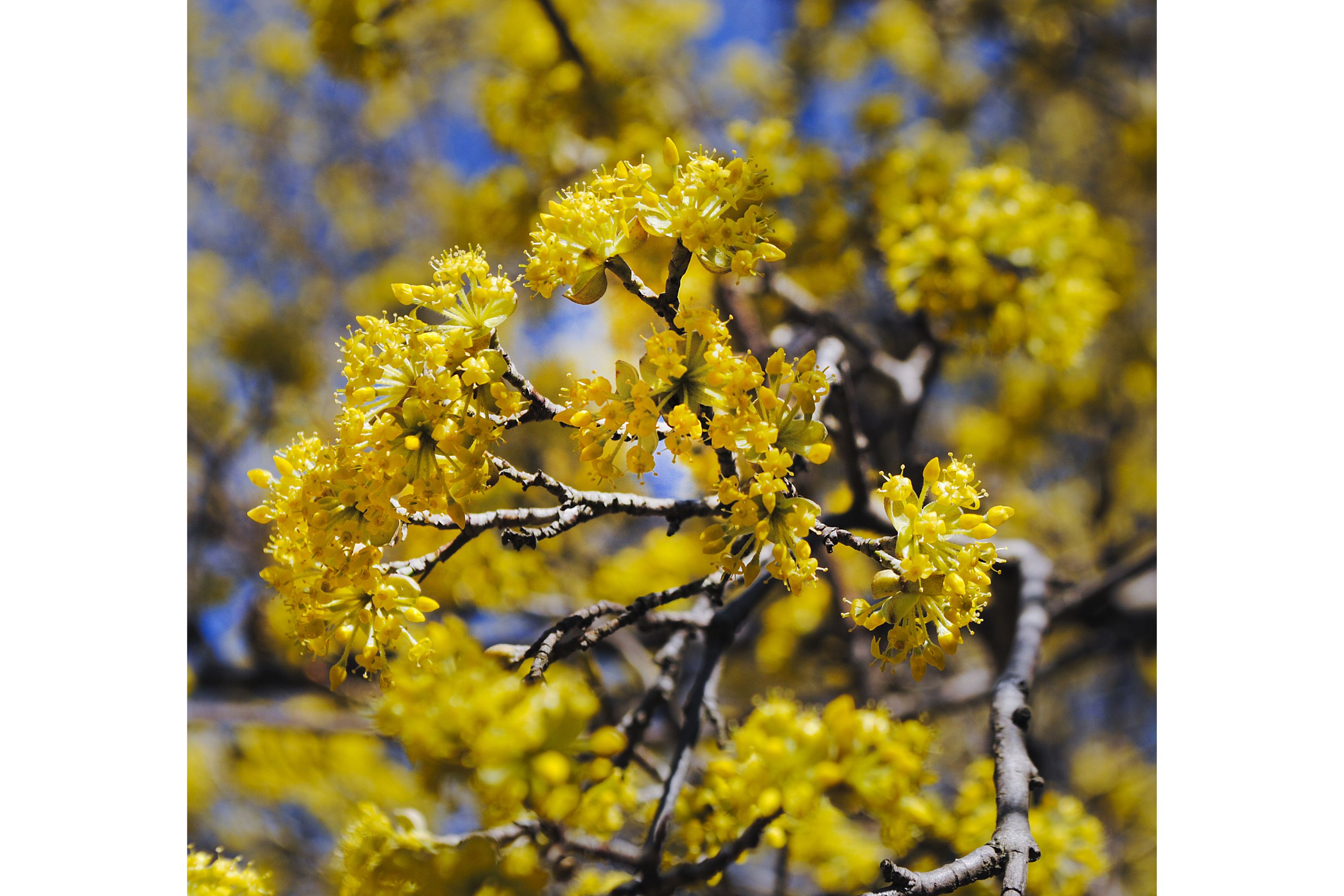Cornelian cherry
(Cornus mas)

Description
Cornus mas, the Cornelian cherry, European cornel or Cornelian cherry dogwood, is a species of flowering plant in the dogwood family Cornaceae, native to Southern Europe and Southwestern Asia. It is a medium to large deciduous shrub or small tree growing to 5–12 m tall, with dark brown branches and greenish twigs. The leaves are opposite, 4–10 cm long and 2–4 cm broad, with an ovate to oblong shape and an entire margin. The flowers are small (5–10 mm in diameter), with four yellow petals, produced in clusters of 10–25 together in the late winter (between February and March in the UK), well before the leaves appear. The fruit is an oblong red drupe 2 cm long and 1.5 cm in diameter, containing a single seed. The fruits are red berries. When ripe on the plant, they bear a resemblance to coffee berries, and ripen in mid- to late summer. The fruit is edible, as used in Eastern Europe, the UK, and British Columbia, Canada, but the unripe fruit is astringent. When ripe, the fruit is dark ruby red or a bright yellow. It has an acidic flavor which is best described as a mixture of cranberry and sour cherry; it is mainly used for making jam, makes an excellent sauce similar to cranberry sauce when pitted, and then boiled with sugar and orange, but also can be eaten dried. In Azerbaijan and Armenia, the fruit is used for distilling vodka, in Austria and the German Alps, for distilling Dirndlbrand. In Serbia, Montenegro, Albania and Bosnia, it is distilled into rakia. In Turkey and Iran, it is eaten with salt as a snack in summer, and traditionally drunk in a cold drink called kızılcık şerbeti. Cultivars selected for fruit production in Ukraine have fruit up to four centimetres long. It is eaten in Eastern Europe in many ways including as a traditional medicine. The fruit of Cornus mas (together with the fruit of C. officinalis) has a long history of use in traditional Chinese medicine in which it is known as shānzhūyú, 山茱萸 and used to retain the jing. The species is also grown as an ornamental plant for its late winter yellow flowers, which open earlier than those of Forsythia. While Cornus mas flowers are not as large and vibrant as those of the Forsythia, the entire plant can be used for a similar effect in the landscape.
Taxonomic tree:







